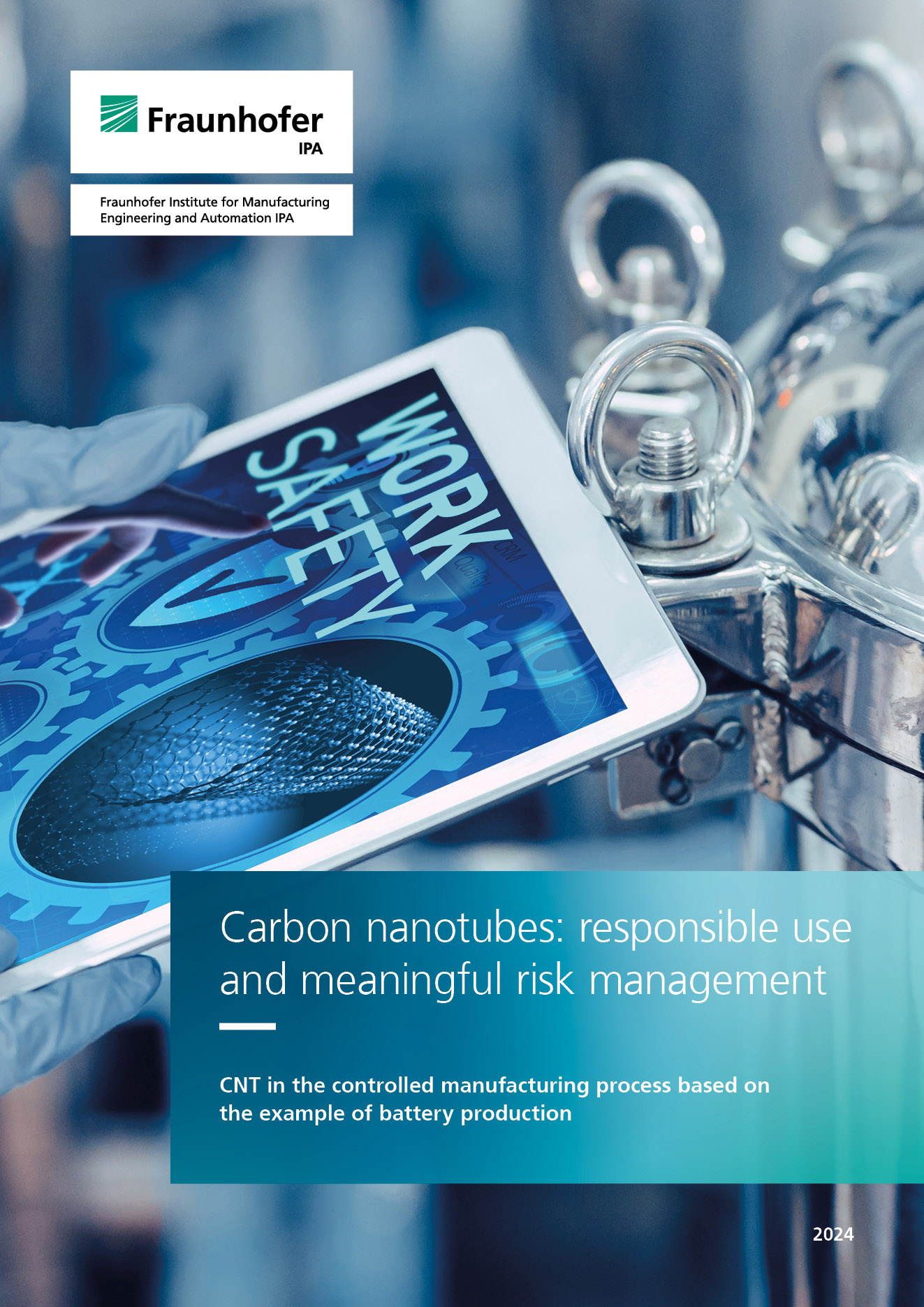Carbon nanotubes: responsible use and meaningful risk management - CNT in the controlled manufacturing process based on the example of battery production
Content of the whitepaper:
Tiny tubes made of carbon, with impressive properties despite their diameter measuring only a few nanometers: Carbon Nanotubes. They can withstand an estimated current flow approximately a thousand times higher than copper wires; their thermal conductivity exceeds that of diamond, the best naturally occurring heat conductor, by multiples. This makes them attractive for numerous applications, including battery manufacturing. At the same time, Carbon Nanotubes also pose health risks through inhalation of the smallest fibers. Toxic effects have been demonstrated. Initial long-term studies are yet to be published.
Why is this whitepaper worth it?
Decision-makers in product development and manufacturing processes face a challenging task in assessing the opportunities and risks of the high-performance material CNT. The necessary background knowledge is often only available to specialists and it is difficult to understand.
This whitepaper compiles this background knowledge and a pragmatic assessment of the advantages and disadvantages of CNT in a compact way through an extensive pool of authors. The content provides a basis for assessing the opportunities and risks of CNT and refers to the experts at Fraunhofer IPA and the author pool for individual evaluations.
